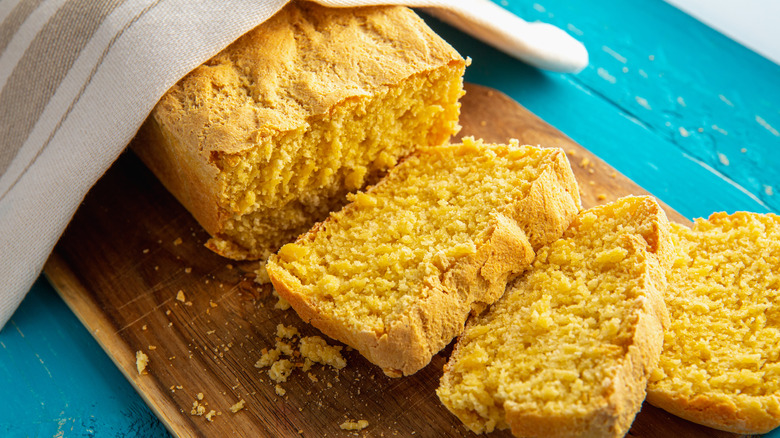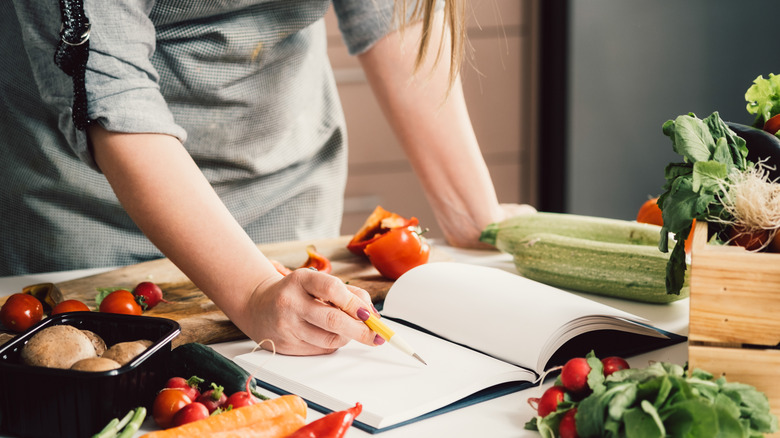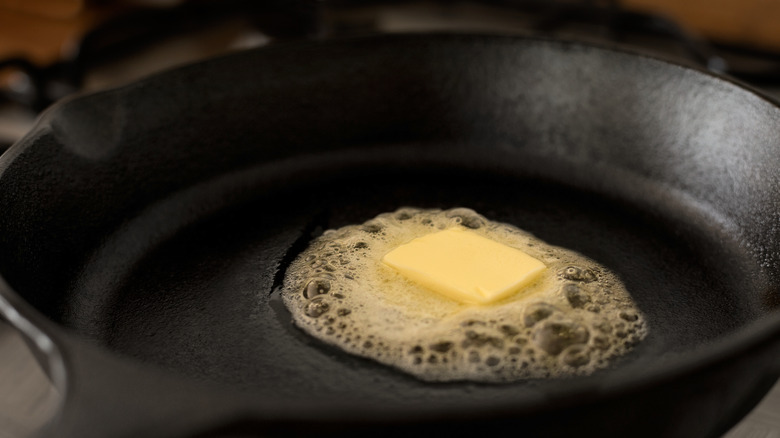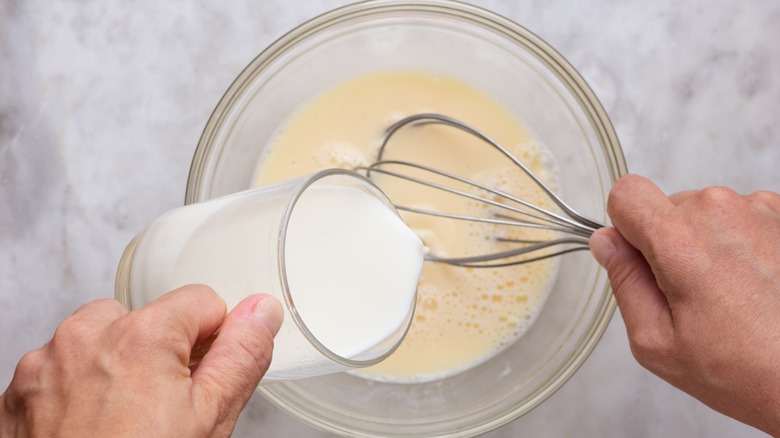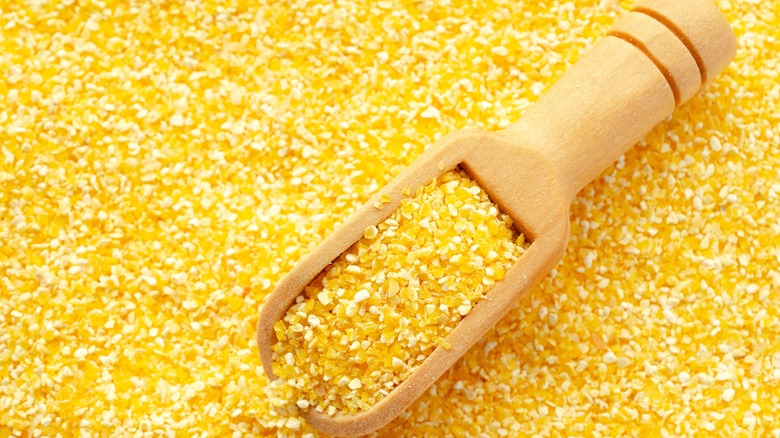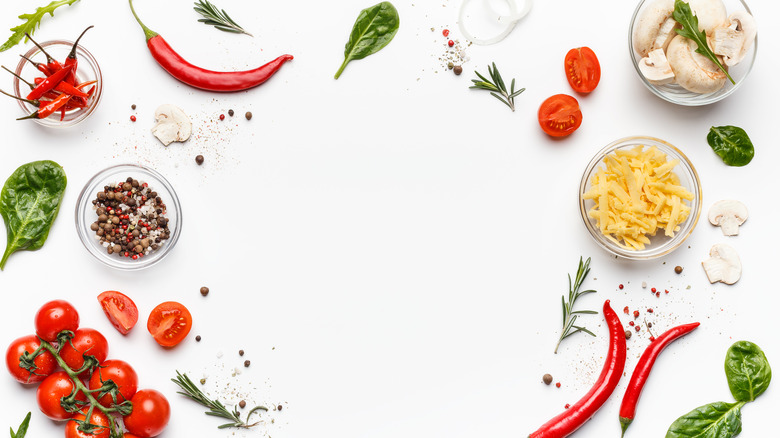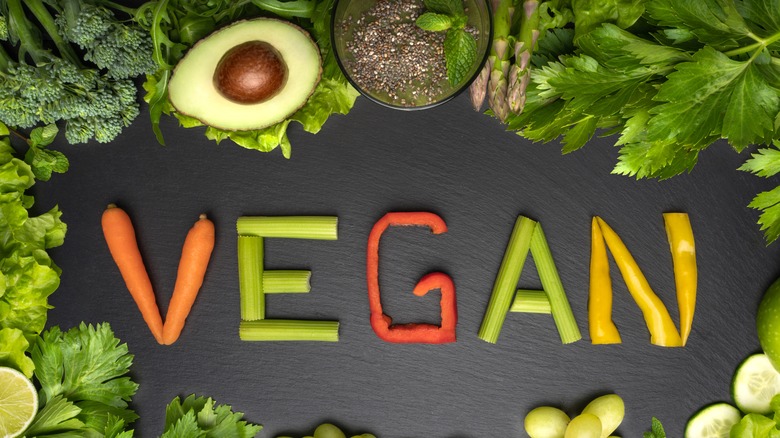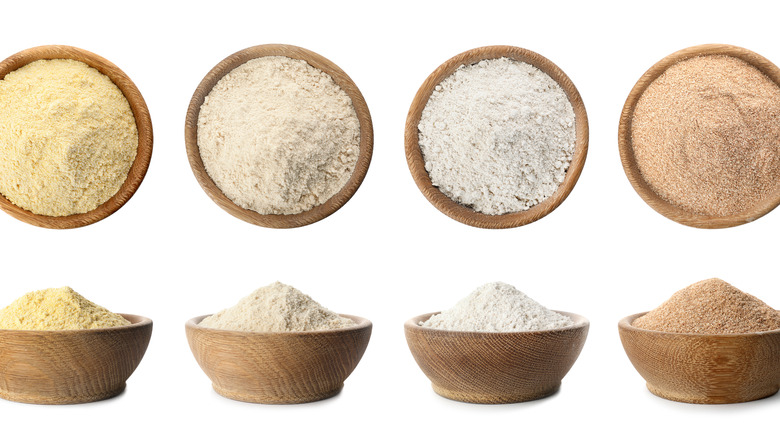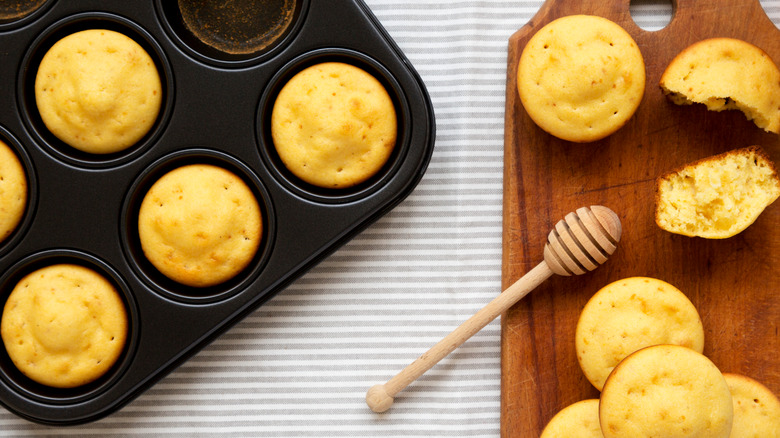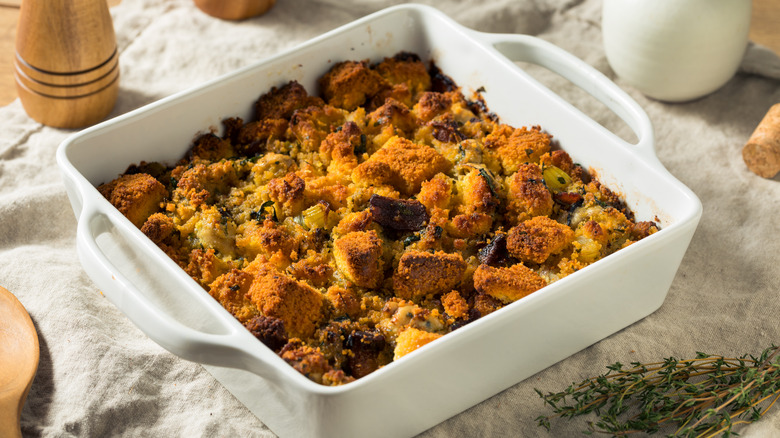9 Tips For Making The Best Cornbread
Cornbread is a quick bread, meaning that it does not rely on yeast to rise. Leavening agents such as baking powder and baking soda create air bubbles in the batter, giving cornbread its soft and fluffy texture. Because cornbread does not use yeast, it rises quickly, meaning you can prep and bake cornbread in under an hour. It is the perfect side dish for beans and greens, chili, or almost any soup, and the leftovers (if there are any!) make a great breakfast with a little butter and honey.
Cornbread is a Southern staple, and for good reason—it is delicious! Pop into almost any restaurant in the South and you will find cornbread on the menu, and most home cooks make it regularly as well. While most packages of cornmeal come with a recipe for cornbread or corn muffins on the bake, many families have a favorite recipe they rely on or tweak the basic recipe to their taste. You too can make delicious cornbread tailored to your preferences with just a little trial and error.
Start with a classic recipe
Before you can put your own spin on cornbread, you need to master a classic recipe. Standard cornbread like this Traditional Cornbread calls for both wheat flour and cornmeal. The cornmeal provides a slightly grainy texture while the wheat flour keeps it fluffy.
For the best results, make sure that your ingredients are fresh. While flour and cornmeal will keep for a long time in the pantry, they can become rancid if they sit for too long. In addition, baking powder can lose its activity over time, especially in humid environments. If you use baking powder that is no longer active, your cornbread will fail to rise and will come out dense and chewy.
Before mixing the ingredients, you should let the eggs and milk come to room temperature. Just set them on the counter an hour or so before you plan to bake. In a pinch, you can run the eggs under warm water and gently microwave the milk to warm it up. Ingredients that are at the same temperature will blend more analogously to produce evenly textured cornbread.
Some recipes call for buttermilk, which you may not keep on hand. You can always substitute regular milk or make your own buttermilk by adding one to two tablespoons of lemon juice to milk, then letting it sit for a minute. Buttermilk gives cornbread a lightly tang flavor.
Bake cornbread in a hot baking dish
Cornbread comes out best when you start with a hot baking dish. Something about the batter hitting a piping hot dish creates a crispy, tasty crust. Tradition calls for baking cornbread in a cast iron skillet, but you can make it in just about any baking dish, so use whatever you have handy. Just pop the baking dish in the oven while it preheats, and it should be nice and toasty by the time you are done prepping the batter. Cast iron skillets or other dark baking pans will give you a crispier crust than glass pans. No matter which type of pan you use, take care not to overcook the cornbread or it will taste too dry.
To take your cornbread to the next level, add a few tablespoons of butter to the baking dish for one to two minutes before you add the batter. Exact measurements are not important here because the butter is not really an ingredient. It's more like a built-in condiment. The melted butter will not only keep the cornbread from sticking to the pan, but it will also create a crispy, buttery top layer of cornbread. Just flip the cornbread upside down when you take it out of the pan, then serve.
Let it rest—but not for too long
While you do not have to let cornbread rise like you would a yeast bread, for better results, you can still let it rest before you bake it. When you add the wet ingredients to the dry ingredients in cornbread, the baking powder reacts with the liquid to produce tiny bubbles of carbon dioxide. These bubbles cause the batter to increase in volume, creating a fluffy texture. Allowing the batter to rest for 15 to 20 minutes after mixing it gives the baking powder more time to react, producing more bubbles and an overall softer, lighter texture. If you let the batter rest too long, though, the bubbles will start to pop and your batter will collapse.
Once you have let the batter rest, your challenge is to pour the batter into the baking dish without disturbing the bubbles. The best way to do this is to pour the batter slowly and gently into the greased baking dish. Avoiding scraping the batter harshly with a spatula, because this abrasive action will pop a lot of the bubbles in the batter.
Vary the texture of your cornbread
The texture of cornbread varies widely based on the ingredients you use, and everybody has a preference. If you have tried cornbread in the past and didn't really care for it, you might want to play around with the ingredients. It could be that you just haven't tried the right recipe!
Traditionally, Southern cornbread is more cake-like and sweet, whereas Northern cornbread tends to be less sweet, drier, and crumblier. Southern cornbread relies on more eggs and butter to achieve that soft, cakelike texture, and it calls for a lot more sugar for that sweet flavor. In contrast, many Northern cornbread recipes are light on eggs and butter and use just a tablespoon or two of sugar (via Feast Magazine).
If the recipe you currently use results in a dry cornbread and you want to make it more cakelike, try adding one egg and a few tablespoons of butter to soften the texture. On the other hand, if you like your cornbread dry, omit an egg or some of the butter. Play around with the recipe you have—it's hard to ruin cornbread!
Mix it up with mix-ins
Once you have mastered a basic cornbread recipe that you love, you can change it up by mixing in additional ingredients. This Traditional Cornbread calls for fresh corn kernels, but corn on the cob can be hard to come by outside of summer. Feel free to substitute frozen or canned corn in a pinch. If you use canned corn, rinse it first to remove some of the salt.
Creamed corn also works well in cornbread. Since creamed corn is a liquid, cut back on other added liquids to avoid dense, overly moist bread. Most cans of creamed corn have added sugar, so you may want to reduce the sugar in the recipe as well.
To sneak some veggies into your kids' diet, or to add some to your own meals, toss in other vegetables besides corn. Steamed or fried zucchini or summer squash would work well, especially when diced into bite-sized bits, as would frozen broccoli or diced tomatoes.
You can also spice things up by adding cheese and jalapeños to just about any cornbread recipe, or try this Cast-Iron Pan Jalapeño Cornbread.
Make it vegan
Whether you are a hardcore vegan, are having a vegan friend over for dinner, or simply want to incorporate more plant-based foods into your diet, you can easily adapt any cornbread recipe to make it vegan. The easiest way to make cornbread vegan is to leave out the eggs and substitute vegan alternatives for any dairy products. For example, you can use almond milk or soy milk in place of dairy milk, and you can replace butter with vegan butter or vegetable oil. If you choose to use vegetable oil, coconut oil works best because it is\]solid at room temperature, just like butter. However, you can still use any other vegetable oil. It might affect the texture, but the flavor will be fine.
Eggs bind the ingredients together in cornbread, so omitting them may make the cornbread crumblier. You can try replacing the eggs in your recipe with flax eggs, which are simply ground flax seeds soaked in water. This recipe for Vegan Lemon-Cranberry Cornbread uses flaxseed as a binding agent.
Make gluten-free cornbread
While most cornbread recipes use wheat flour, the main ingredient is cornmeal, which is naturally gluten-free. That means it is easy to adjust almost any cornbread recipe to make it gluten-free. Just be sure to use clean pots and pans and avoid opening a bag of flour while you are baking, as the powdery wheat flour can float into the air and contaminate your batter.
There are a lot of gluten-free flour options available, so choose your favorite or whatever you have on hand. Many gluten-free flours are actually a mix of several gluten-free flours such as oat, rice, tapioca, or sorghum flours. This Gluten-Free Cornbread uses a mixture of cornmeal, white rice flour, and brown rice flour.
If you have a favorite cornbread recipe, try substituting a gluten-free flour blend cup-for-cup in place of the wheat flour your recipe calls for. You can also replace wheat flour with more cornmeal, although this will produce a grainier texture. Because gluten normally helps bread stick together, you may need to add an extra egg or increase the volume of other wet ingredients to prevent your gluten-free cornbread from crumbling. If you have any leftovers, make this Gluten-Free Roasted Corn And Walnut Cornbread Dressing.
You don't have to bake cornbread in a cast iron skillet
Traditionally, cooks prepare cornbread in a cast-iron skillet. But you can break with tradition and bake cornbread in almost any oven-safe dish. Using a different type of baking pan is a fun way to mix things up and change the presentation.
Cornbread works well in a square 8-inch by 8-inch pan or a standard loaf pan. You can also bake it in a 9-inch by 13-inch pan, but you may need to double the recipe to avoid cornbread that is too thin or overcooked. If you bake cornbread in one of these dishes, simply follow the time instructions from your recipe.
Muffins or mini muffins are a fun way to bake crusty cornbread. You can even find molds shaped like miniature corn on the cob, which would be adorable for a summer picnic or barbecue. With smaller shapes like these, the cornbread will cook more quickly. Reduce the baking time and check on the cornbread after about 15 minutes to be sure it does not burn.
Don't toss your leftover cornbread
If you end up with leftover cornbread, don't toss it! There are a million great ways to use leftover cornbread, starting with breakfast the next day. Toast cornbread, then smear with a generous dollop of butter and honey for an easy, delicious start to the day. You can also serve leftover cornbread alongside eggs instead of toast or an English muffin.
If you want to save your leftover cornbread for another day, it will keep well in the freezer. Seal leftover cornbread in a ziplock bag, remove as much air as possible, and freeze it. Pull it out, toast it, and serve as usual. You can also use leftover cornbread for breadcrumbs. Simply pull the bag out, whack it with a rolling pin, and there you go! Instant breadcrumbs, perfect for stuffed jalapeños, breaded fried chicken, or sprinkled on top of macaroni and cheese.
You can use cubed, leftover cornbread to make side dishes like Spring Onion Bread Pudding, Mango Jalapeño Cornbread Stuffing, or Classic Cornbread Stuffing Recipe (perfect for Thanksgiving!). Or you can move cornbread to the main course with this Cornbread Chicken Bake.
